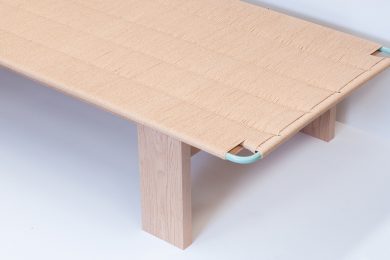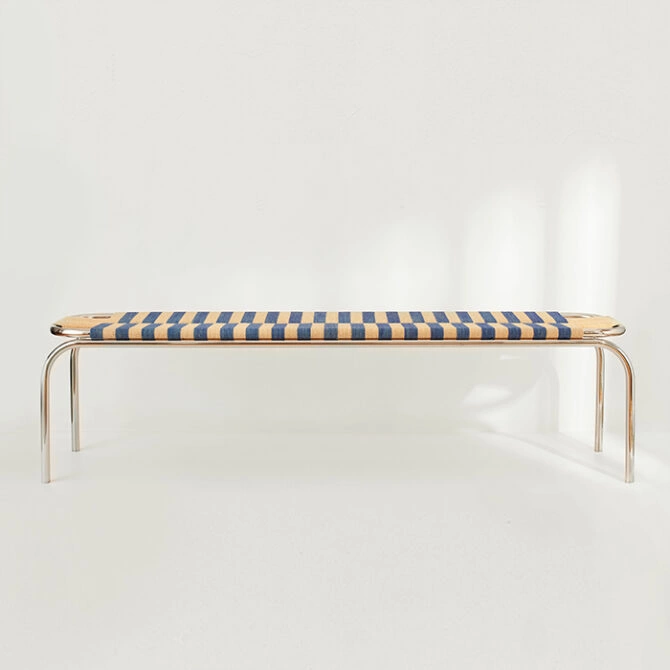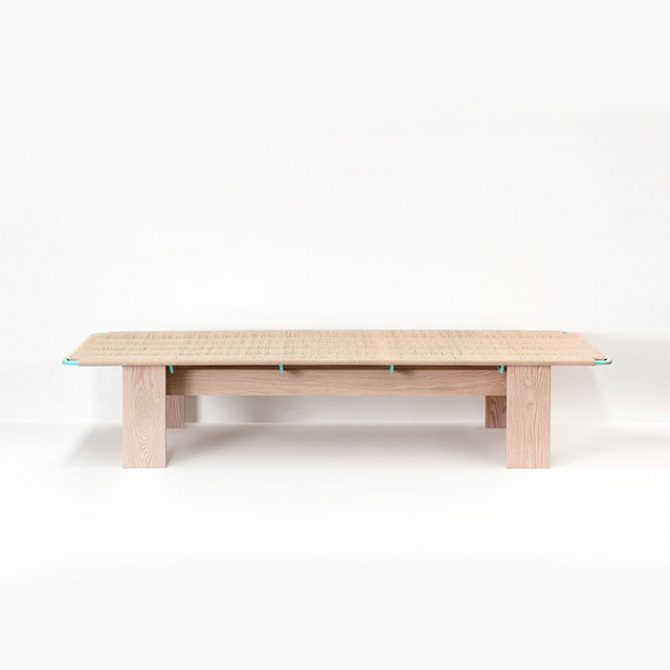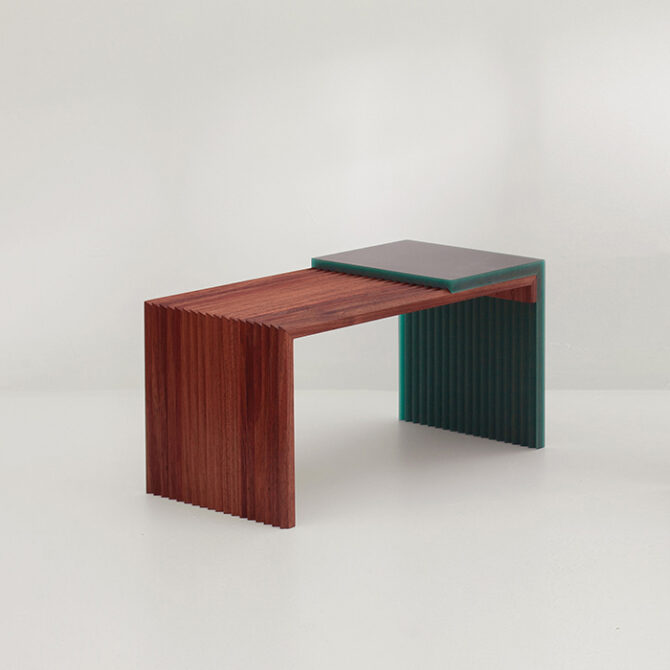Product Spotlight: Rushcutters Bench, James Howe
Seeking to pioneer new ground, creating pieces which are both beautiful and novel in their form and use of materials, is revealed in the Rushcutters Bench by furniture designer James Howe.
Opulently woven with hand-dyed Danish cord in Adelaide, the extraordinary design is a contemporary and considered exploration of notions associated with minimalism. Textual and tactile, the piece combines the woven cord with a stainless steel frame, meticulously polished to an elegantly mirrored sheen.
Having exhibited at the inaugural Melbourne Design Fair 2022, the Bench is just one example of the incredible collectible and contemporary Australian design emerging from the MT community. As one of the most talked about (and Instagrammed!) pieces from the Fair, it clearly struck a chord with everyone.
Heavily inspired by iconic mid-century designer Børge Mogensen, Howe’s love for furniture design was born from when he stumbled upon the iconic J39 chair. And boy, we’re so glad he did! But don’t just take our word for it. Read on to discover more about the monumental process behind hand-weaving more than 1km of Danish cord below.
Hi James! Where did your passion for Danish cord come from?
My fascination with Danish cord goes right back the first instant of my design journey, when I stumbled upon a photo of Borge Mogensen’s J39 chair online. Prior to this moment I had had no conscious interest in furniture, but seeing this beautiful chair totally blew my mind and led quite quickly to me leaving my career as a photographer and magazine writer and pursuing a career as a furniture designer. The J39 Chair has a woven Danish cord seat, which was the inspiration for my own use of the material.
The first piece I ever designed — a change table for my daughter Paige — contained woven Danish cord. When designing the top panel, I had the problem of having to navigate the bend radii. I solved this by incorporating a tapered section at each end of the woven panel, where the weft leaves the frame and binds tightly around the warp.
The Danish cord dyeing started out with me making swords for my kids! I wanted to use Danish cord to wrap the handles, but I felt it looked a bit drab so I dyed the cord to make it fun. It looked really beautiful in colour, so of course I started thinking about furniture applications!
Can you tell us about the process of hand-dying the cord?
I created a strand of Danish cord marked with coded dots as a master copy, once the correct spacings had been figured out. These markings then needed to be transferred from the master onto the strands to be dyed. I did this by stringing out 50m sections of Danish cord at my home, running from the front fence to the back fence. I then used coloured pens to transfer the coded system of dots from the master onto the strands of cord to be dyed (the dots are on the underside of the bench, and can still be seen on the finished product if you peer underneath!).
The strands were then removed from the holding apparatus and painstakingly arranged according to the coded markings, then bound, wrapped and dipped in such a way that only the parts to be dyed blue would make contact with the dye.
After dyeing, the bundles were rinsed and hung on the clothesline to dry in the sun. Once semi-dry and therefore strong enough to be handled, the bundles were opened up and hung out to dry completely. Finally, the strands — now endowed with alternating blue and natural sections — were wound onto a wooden shuttle and woven onto the bench, each section joined on the underside with a knot or stainless steel crimp.
Although I’d put so much energy into perfecting the system, I had been sure some fatal error would reveal itself as I wove my first strand onto the frame. Instead, the cord lay itself down in its designated colours, alternating perfectly as was wound one and tensioned. It sounds silly, but each time I expended a strand I couldn’t wait to tie the next one on and watch the magic happen all over again!
What does design mean to you?
To me, a day in design is about having the courage to create work daily and put it in front of people with the intention of changing their lives for the better. I grew up in a fairly chaotic home, but occasionally as a kid I had the deeply impactful experience of encountering minimal, beautifully designed spaces. These encounters lifted my mood, helped me to think more energetically and creatively, and made me feel connected to the people who created them. I imagine there are other people out there who yearn for beauty, order and connection in the same way I do; these are the people I seek to serve through my work.




